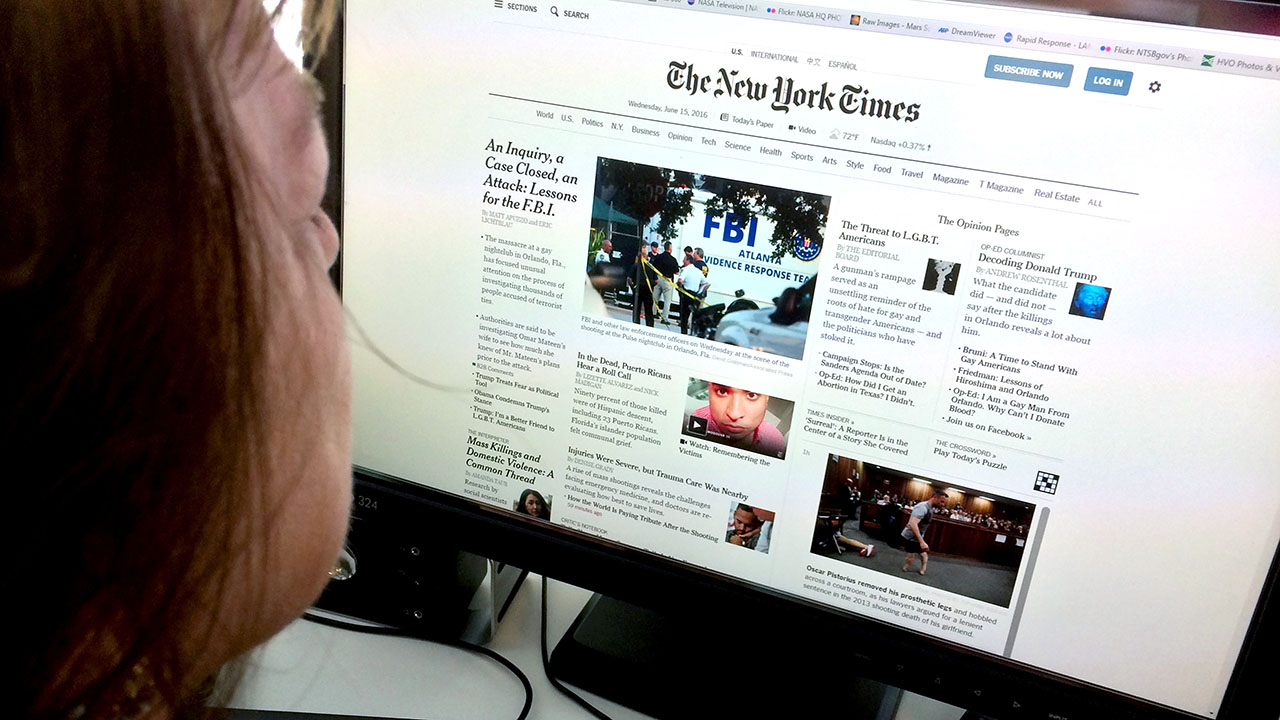How to Leverage stnews.live to Stay Ahead
Wiki Article
The Effect of Social Media heading We Consume News Online
Social media has essentially changed news usage. It supplies instant accessibility to details, typically overshadowing conventional media outlets. However, this fast dissemination comes with difficulties. Individuals encounter the danger of experiencing false information and ending up being trapped in echo chambers. The algorithms driving tailored content can cover diverse perspectives. As these characteristics develop, understanding their effects becomes essential for educated engagement in public discussion. What techniques might assist browse this complicated landscape?The Evolution of News Usage in the Digital Age
As technology advanced, the way people eaten news changed substantially in the digital age (stnews.live). Traditional newspapers and broadcast media began to decline as the net emerged as a key resource of details. On the internet systems used immediate access to news posts, videos, and podcasts, permitting individuals to remain notified at any moment. The benefit of mobile phones additionally accelerated this change, allowing customers to get updates on the moveAdditionally, the increase of news collectors and websites facilitated the intake of varied perspectives, encouraging users to customize their news intake based on personal rate of interests. This evolution additionally triggered wire service to adapt their methods, concentrating on electronic web content and appealing visitors through multimedia formats. Because of this, the typical obstacles of time and space in news shipment reduced, leading to a much more immediate and personalized news experience for target markets worldwide.
The Function of Social Network Operatings Systems in News Circulation
Social media systems have actually changed news distribution by providing immediate accessibility to info. Their algorithm-driven material curation usually focuses on engagement over precision, causing significant trustworthiness challenges (stnews.live). As users browse this landscape, the ramifications for news intake and public discourse become increasingly intricateInstant News Accessibility
Although typical news electrical outlets have long been the key resource of information, the surge of social media systems has actually drastically changed how news is accessed and eaten. Immediate news gain access to has become a hallmark of the digital age, enabling users to obtain updates in genuine time. Platforms such as Twitter, Facebook, and Instagram allow news to spread out swiftly, usually surpassing standard media in rate and reach. Individuals can share tales, discuss events, and involve with journalists, developing a vibrant communication in between the target market and news material. This immediacy fosters a culture of necessity, prompting individuals to seek details swiftly. As a result, the assumption for timely news has improved journalistic techniques, compelling news organizations to adjust their techniques to fulfill the needs of a busy electronic setting.Algorithm-Driven Material
While customers actively involve with web content on social media sites, the formulas that control these systems play a pivotal function in identifying which newspaper article acquire visibility. These algorithms analyze customer behavior, preferences, and involvement metrics to curate tailored news feeds. Therefore, certain tales might be enhanced while others continue to be rare, frequently prioritizing mind-blowing or trending subjects over substantive reporting. This discerning exposure forms individuals' understandings of current occasions and influences public discourse. In addition, the dependence on algorithm-driven content can create echo chambers, where customers are mostly subjected to perspectives that straighten with their own ideas. The dynamics of news circulation on social media systems significantly affect how people eat and translate info in the electronic age.Trustworthiness Difficulties
As users progressively transform to social media sites for news, the credibility of info encountered on these systems ends up being a pushing problem. The decentralized nature of social media allows any individual to publish material, frequently blurring the lines between dependable journalism and misinformation. Formulas focus on interaction over accuracy, resulting in the extensive dissemination of astonishing or deceptive tales. This setting positions considerable difficulties for individuals trying to recognize trustworthy resources. Social network systems, while endeavoring to deal with false information with fact-checking and web content small amounts, run the gauntlet for disparities and prejudices in their techniques. Eventually, the duty lies with individuals to critically review the news they take in, as the quick spread of details frequently outpaces verification initiatives by systems.The Increase of Resident Journalism and User-Generated Material
The surge of person journalism has encouraged day-to-day people to share news and viewpoints, often offering understandings that standard media might forget. However, this shift likewise provides considerable challenges, particularly the spread of misinformation that can emerge from unverified content. As user-generated content becomes extra prevalent, the balance between authentic voices and accuracy in reporting continues to be an important worry.Equipping Day-to-day Voices

Difficulties of False information
While the increase of person journalism has opened avenues for varied voices in the media landscape, it has actually likewise presented significant obstacles associated with false information. The ease of sharing info through social media systems enables individuals to distribute news swiftly, however this rapid spread frequently comes with the cost of precision. User-generated web content regularly lacks the strenuous fact-checking and content oversight that typical journalism gives. Sensationalized or false stories can obtain traction, misguiding target markets more helpful hints and shaping public assumption. The blending of opinion and reality within social media complicates the distinction in between trustworthy info and false information. As an outcome, consumers should browse an increasingly complex media environment, requiring important assuming abilities to recognize trustworthy news sources among the sound
Misinformation and Its Effects for Public Discourse
As social media systems progressively control the landscape of information dissemination, the proliferation of false information presents considerable difficulties for public discourse. False information, frequently made to misdirect or prompt emotional responses, can distort assumptions of truth and weaken trust in reputable sources. This sensation results in polarized point of views, as individuals move towards resemble chambers that strengthen their beliefs, further entrenching departments within culture.The effects for public discourse are profound. When people rely upon false details, meaningful dialogue reduces, and the autonomous procedure endures. Additionally, misinformation can prompt worry and confusion, affecting public health, safety and security, and political stability. Therefore, fostering media literacy becomes necessary, encouraging people to critically assess information and determine truth from fiction. Dealing with the challenges postured by false information is critical for maintaining the integrity of public discussion and ensuring a well-informed populace efficient in participating in constructive discussions.
The Impact of Formulas on News Presence
Provided the central role of algorithms in figuring out content exposure, their influence on news usage is profound. These algorithms, utilized by social networks systems, prioritize certain kinds of material based upon individual interaction and choices. As a result, news posts that line up with preferred fads or audience interests are most likely to be shown plainly, while less mind-blowing stories may be forgotten. This produces an atmosphere where individuals are exposed largely to info that reinforces their point of views, potentially bring about resemble chambers.In addition, the constant advancement of algorithms suggests that wire service have to adapt their approaches to straighten with these altering visit our website criteria, typically prioritizing clickbait or mentally billed headlines. The stability of news coverage can be endangered, as crucial stories may not get the exposure they deserve. The algorithmic shaping of news exposure as a result plays an essential role in influencing public perception and understanding of present occasions.
The Change Towards Visual Narration in News Media
Significantly, news media is welcoming aesthetic narration as a powerful tool to involve audiences. This technique leverages photos, video clips, infographics, and interactive components to communicate info better than standard text-based styles. As attention covers shorten, visuals use a fast, impactful method to connect complicated stories and get viewers' passion.Systems like Instagram and TikTok have additional increased this pattern, engaging wire service to adjust their material techniques to fit these visually-driven settings. By including engaging visuals, news electrical outlets can boost psychological links and foster greater understanding of topical concerns.
Aesthetic narration enables for even more diverse narratives, showcasing numerous point of views with vibrant presentations. As target markets progressively consume news through smart phones, the change towards visuals not only satisfies customer choices however likewise aids to break down obstacles to info access. Inevitably, this development shows a more comprehensive change in how news is generated and consumed in the electronic age.
Future Patterns: Browsing the Altering Landscape of News Intake
While the electronic landscape proceeds to advance, news usage is poised for significant change driven by emerging modern technologies and transforming audience behaviors. As expert system and artificial intelligence breakthrough, individualized news feeds will come to be a lot more widespread, allowing customers to get material customized to their interests. This personalization could bring about higher engagement but also elevate problems about resemble chambers and misinformation.Additionally, the rise of voice-activated tools and smart speakers will influence exactly how news is provided, changing the emphasis from visual to acoustic formats. This trend may urge wire service to take on even more concise and engaging audio material.

Frequently Asked Inquiries
Just How Do Social Media Site Communications Affect News Trustworthiness?
Social network interactions can considerably influence assumptions of news trustworthiness. Engagement metrics, such as likes and shares, commonly shape target market depend on, with prominent posts acquiring regarded legitimacy, despite the precision or dependability of the details presented.What Function Do Influencers Play in Shaping News Narratives?
Influencers substantially form news narratives by i loved this leveraging their platforms to magnify specific tales, commonly tailoring web content to their audience. This can result in prejudiced perspectives, influencing public assumption and prioritizing sensationalism over valid reporting.Just How Can Users Identify Reliable News Sources on Social Network?
Individuals can determine trustworthy news sources on social media by examining the source's reliability, validating facts with multiple outlets, reviewing the expertise of the material, and acknowledging possible biases in reporting to ensure exact details.What Influence Does Social Media Have on Standard Journalism Jobs?
Social network greatly impacts standard journalism work by altering income designs, lowering need for print media, and cultivating competition from resident reporters. Consequently, many experts face task instability and have to adjust to rapidly changing media landscapes.Just How Do Various Demographics Consume News on Social Media?
Different demographics exhibit varied preferences for news intake on social media. More youthful target markets prefer systems like TikTok and Instagram for fast updates, while older people often tend to like Twitter and facebook for a lot more thorough discussions and short articles.Report this wiki page